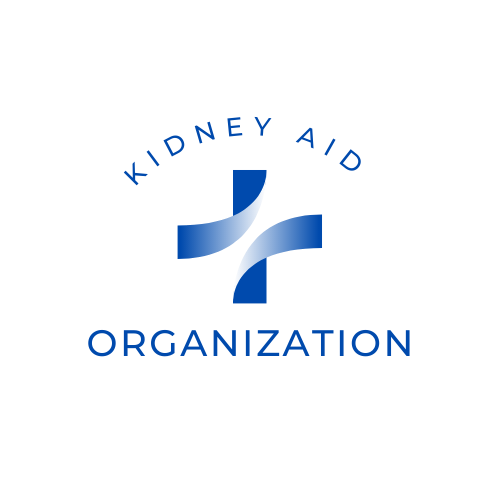Interleukins, a group of signaling proteins, play a pivotal role in the immune system's regulation and response. This article aims to delve into the intricacies of interleukin treatment, elucidating its mechanisms, applications, and efficacy in various medical conditions. From autoimmune disorders to cancer immunotherapy, interleukin-based therapies have garnered significant attention in the medical community. Let's explore how interleukin treatment works and its implications for healthcare.
The Basics of Interleukins
Interleukins are cytokines, small proteins secreted by various cells in the immune system. These signaling molecules facilitate communication between immune cells, orchestrating immune responses to pathogens, inflammation, and tissue repair. Each interleukin exerts specific effects on target cells through binding to corresponding receptors, initiating signaling cascades that modulate immune activity.
Mechanism of Action
Interleukin treatment harnesses the immunomodulatory properties of these proteins to manage diseases characterized by dysregulated immune responses. One prominent example is Interleukin-2 (IL-2), a key regulator of T cell proliferation and function. In cancer immunotherapy, IL-2 is administered to bolster the activity of cytotoxic T cells, enhancing their ability to recognize and eradicate tumor cells. Additionally, interleukins such as IL-6 and IL-17 play vital roles in inflammatory pathways, making them potential targets for therapeutic intervention in autoimmune disorders.
Clinical Applications
Interleukin-based therapies have shown promise in treating various medical conditions, ranging from autoimmune diseases like rheumatoid arthritis and psoriasis to certain cancers. For instance, IL-2 therapy has been approved for metastatic melanoma and renal cell carcinoma, demonstrating significant improvements in overall survival rates. Moreover, IL-6 inhibitors have revolutionized the management of conditions like rheumatoid arthritis and inflammatory bowel disease, providing patients with effective alternatives to conventional treatments.
Interleukin Treatment in Autoimmune Disorders
Autoimmune diseases arise from the immune system's aberrant response against self-antigens, leading to tissue damage and inflammation. Interleukin-targeted therapies offer a targeted approach to modulating immune dysregulation in these conditions, providing relief for patients with debilitating symptoms.
Targeting IL-6 Pathway
IL-6 plays a pivotal role in the pathogenesis of several autoimmune disorders, including rheumatoid arthritis and systemic lupus erythematosus. By blocking the IL-6 receptor or inhibiting IL-6 signaling, biologic agents like tocilizumab and sarilumab effectively mitigate inflammatory processes, alleviating joint pain and swelling in affected individuals. Clinical trials have demonstrated the efficacy of IL-6 inhibitors in achieving disease remission and improving functional outcomes in patients with rheumatic diseases.
Regulating T Cell Responses
Interleukin-2 therapy has emerged as a promising approach for modulating T cell responses in autoimmune conditions such as type 1 diabetes and multiple sclerosis. By promoting the expansion of regulatory T cells (Tregs), IL-2 administration restores immune tolerance and suppresses aberrant immune activation. This targeted immunomodulatory strategy holds great potential for inducing long-term remission and preventing disease progression in autoimmune disorders.
Interleukin Treatment in Cancer Immunotherapy
Cancer immunotherapy aims to harness the power of the immune system to recognize and eliminate tumor cells. Interleukin-based therapies serve as integral components of immunotherapeutic regimens, enhancing antitumor immune responses and improving treatment outcomes for cancer patients.
Enhancing T Cell Function
IL-2 therapy remains a cornerstone of cancer immunotherapy, particularly in metastatic melanoma and renal cell carcinoma. By stimulating the proliferation and activity of cytotoxic T cells, IL-2 augments the immune system's capacity to target and destroy cancer cells. Despite its efficacy, IL-2 treatment is associated with significant toxicities, necessitating careful patient selection and monitoring during therapy.
Exploring Interleukin Treatment for Kidney Disease
Kidney disease encompasses a spectrum of conditions affecting the structure and function of the kidneys, ranging from acute kidney injury to chronic kidney disease (CKD). Interleukins, as key regulators of immune responses and inflammation, have emerged as potential therapeutic targets in managing kidney disorders. This article delves into the role of interleukin treatment in kidney disease, highlighting its mechanisms of action, clinical applications, and implications for patient care.
Understanding Kidney Disease
Before delving into interleukin treatment, it's essential to grasp the pathophysiology of kidney disease. The kidneys play a vital role in maintaining fluid and electrolyte balance, regulating blood pressure, and eliminating metabolic waste products from the body. However, various factors such as hypertension, diabetes, autoimmune conditions, and genetic predispositions can disrupt renal function, leading to kidney damage and dysfunction.
The Role of Inflammation
Inflammatory processes play a central role in the progression of kidney disease. In response to injury or insult, immune cells release pro-inflammatory cytokines, including interleukins, triggering inflammatory cascades that contribute to tissue damage and fibrosis. Chronic inflammation perpetuates renal injury and impairs kidney function, exacerbating the pathogenesis of conditions such as diabetic nephropathy, glomerulonephritis, and lupus nephritis.
Interleukins in Kidney Disease Pathogenesis
Interleukins are key mediators of immune responses and inflammation in the kidney microenvironment. In conditions like CKD, dysregulated production of interleukins, particularly IL-6, IL-17, and IL-18, contributes to renal inflammation, fibrosis, and progressive loss of kidney function. Targeting these interleukins and their signaling pathways presents a promising approach to attenuating kidney damage and preserving renal function in patients with kidney disease.
Interleukin-Based Therapies
Interleukin-targeted therapies aim to modulate immune responses and inflammatory processes implicated in kidney disease pathogenesis. By blocking interleukin signaling or promoting anti-inflammatory effects, these therapies hold potential for mitigating renal injury, slowing disease progression, and improving clinical outcomes for patients with kidney disorders.
Targeting IL-6 Pathway
IL-6 plays a multifaceted role in kidney disease, promoting inflammation, fibrosis, and endothelial dysfunction. In conditions like diabetic nephropathy and CKD, elevated IL-6 levels correlate with disease severity and progression. Therapeutic agents targeting the IL-6 pathway, such as tocilizumab and sarilumab, have shown promise in preclinical studies and clinical trials for reducing proteinuria, inflammation, and renal fibrosis in experimental models of kidney disease.
Modulating IL-17 Responses
IL-17, produced by T helper 17 cells, contributes to renal inflammation and tissue damage in autoimmune-mediated kidney diseases like lupus nephritis and IgA nephropathy. Inhibition of IL-17 signaling with monoclonal antibodies or small molecule inhibitors attenuates renal injury and improves renal function in preclinical models of kidney disease. Clinical trials evaluating the efficacy of IL-17 inhibitors in patients with autoimmune kidney disorders are ongoing, offering hope for novel therapeutic interventions.
Targeting IL-18 in Acute Kidney Injury
IL-18, a pro-inflammatory cytokine, is implicated in the pathogenesis of acute kidney injury (AKI) and ischemia-reperfusion injury. Elevated IL-18 levels in AKI correlate with disease severity and adverse outcomes. Therapeutic strategies aimed at neutralizing IL-18 or inhibiting its production have demonstrated renoprotective effects in experimental models of AKI, reducing tubular injury and preserving renal function. Clinical translation of IL-18-targeted therapies holds potential for preventing AKI and improving outcomes in high-risk patient populations.
Future Directions and Challenges
While interleukin-based therapies show promise in the management of kidney disease, several challenges remain to be addressed. Optimizing treatment strategies, identifying biomarkers for patient stratification, and minimizing off-target effects are critical considerations in the development of interleukin-targeted therapies for kidney disorders. Additionally, further research is needed to elucidate the precise mechanisms underlying interleukin-mediated renal injury and to explore novel therapeutic targets in the interleukin signaling cascade.
Targeting IL-12 and IL-23
Recent advancements in cancer immunotherapy have led to the development of interleukin-targeted agents such as IL-12 and IL-23 inhibitors. These cytokines play critical roles in antitumor immunity, regulating the function of natural killer cells and T helper 17 cells, respectively. By modulating the tumor microenvironment and promoting immune surveillance, IL-12 and IL-23 blockade represents a promising strategy for enhancing the efficacy of cancer immunotherapy and overcoming treatment resistance.
Conclusion
In conclusion, interleukin treatment represents a paradigm shift in the management of autoimmune disorders and cancer immunotherapy. By targeting key signaling pathways in the immune system, interleukin-based therapies offer tailored approaches to modulating immune responses and combating disease progression. Continued research efforts aimed at elucidating the mechanisms of interleukin action and identifying novel therapeutic targets will further propel the field of immunotherapy forward, ultimately improving outcomes for patients with diverse medical conditions.

